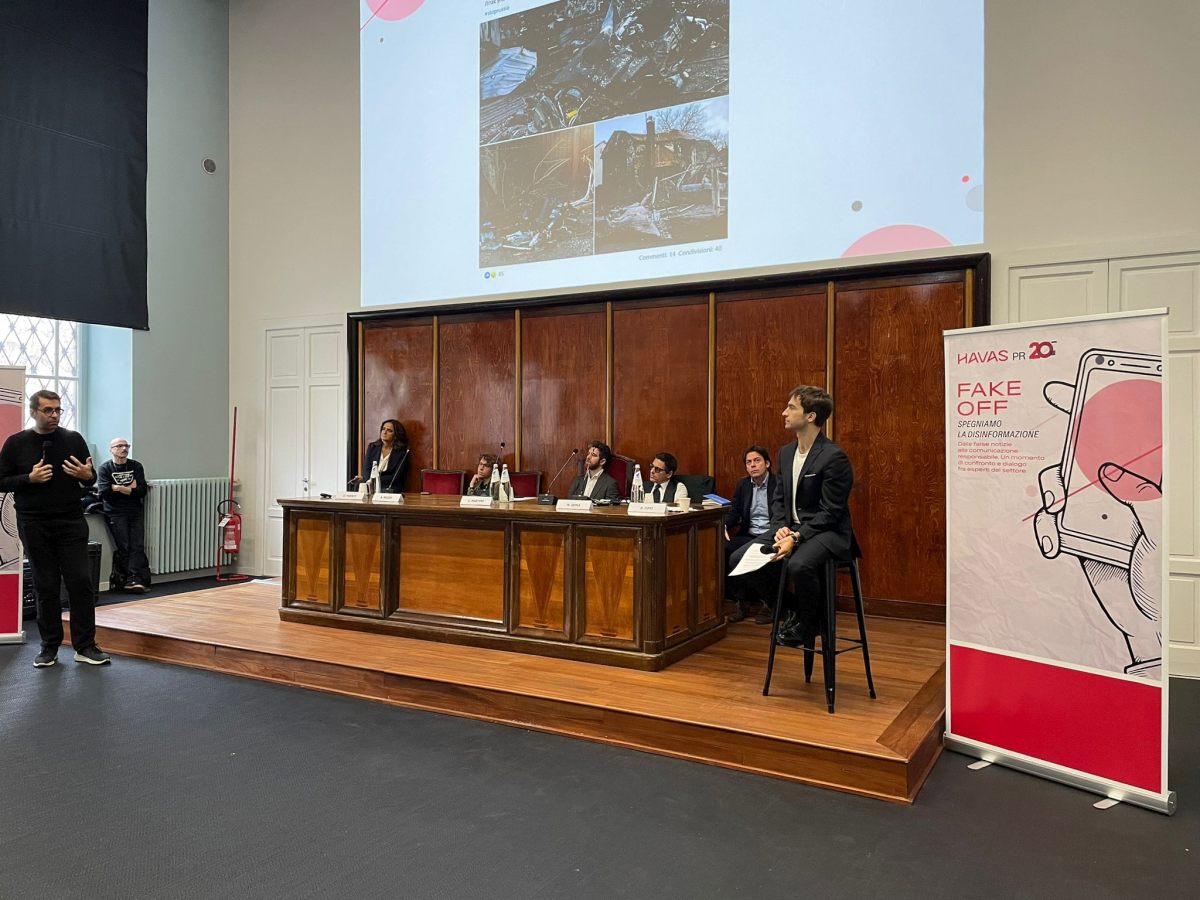MILAN (ITALPRESS) – In Italy, one in three young people are unable to correctly understand whether an online piece of information is reliable or whether it is fake news. In particular, when it comes to scientific information, a high tendency to believe in conspiracy theories against science is found among young people. This is what emerges from the report “Disinformation at School,” carried out by a research team led by Professor Carlo Martini of the Vita-Salute San Raffaele University of Milan and presented during the conference “Fake off, let’s turn off misinformation”-organized by Havas Pr, a communications consulting firm part of the Havas Group-, which compared different experts in the field on the issues of fake news and responsible communication. The report was carried out on a sample of more than 2,200 students from 18 high schools in Lombardy, Piedmont and Emilia-Romagna. “The irresponsible or distorted use of digital and artificial intelligence today poses great threats, especially for the youngest, who are deeply connected in digital platforms and social media,” stressed Caterina Tonini, Ceo of Havas Creative Network Italy and co-Founder and Ceo of Havas PR Milan. It has been 20 years that Havas Pr has been involved in communication, having the awareness that communicating means acting responsibly so that opinions are formed and engagement of our listeners is built. Currently, the phenomenon of fake news is very present, which is why the role of responsible communication is very important. Precisely to help the listener understand what the correct information is and thus to choose and act responsibly. “Fake news represents a great risk for companies and the business world,” pointed out Corrado Tomassini, vice president of Havas Pr Milan. “These fake news almost always originate with a purpose and, currently, the mechanisms that are there, especially those on social media, of maximizing engagement, mean that they circulate much more. One of the key elements in countering fake news is to know the objective for which it was spread: a sale, the destruction of a reputation or the visibility of the person who put it out there. As a communications company, the most important thing is to have professionals who are prepared, trained, know the tools and know how to give answers in an immediate timeframe. “Unfortunately,” Tomassini continued, “responding to fake news with well-done fact checking and debunking runs the risk of having very little virality. On this aspect, as we have seen again today, it is useful to work with influencers and people who can increase the virality of a piece of content. “Biagio Oppi, external communications director of Pfizer Italia, spoke about the initiative “A dire il vero,” launched a year and a half ago by the pharmaceutical company to promote responsible communication, correct journalistic information and pre-bunking with respect to medical-scientific issues. “The idea is not to limit ourselves to debunking, so doing fact checking on news that may be false or misleading, but to try to set in motion, precisely pre-bunking activity, promoting media literacy on health issues. In this way, we help people to have that critical sense to decipher potential fake news and have the tools to find the truth,” Oppi explained. “We focus on schools, so students and professors, and university journalism masters, thus targeting future communicators. We have started working both with the Journalists’ Association for journalists in local newspapers and with the communicators’ associations Ferpi and Pa Social.”
– Photo xm4/Italpress –
(ITALPRESS).

